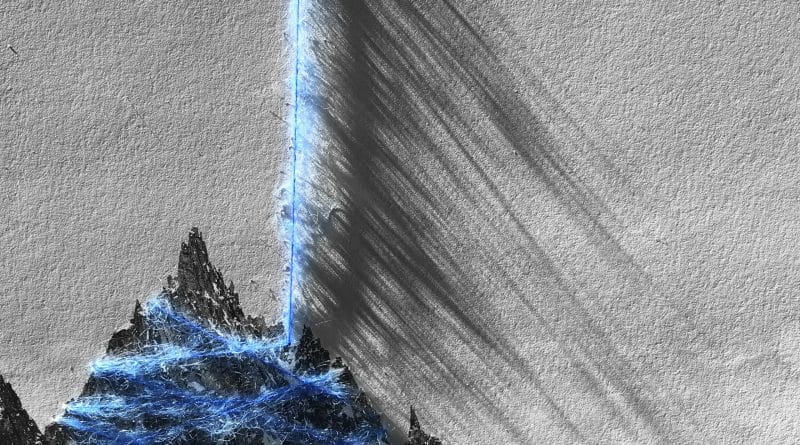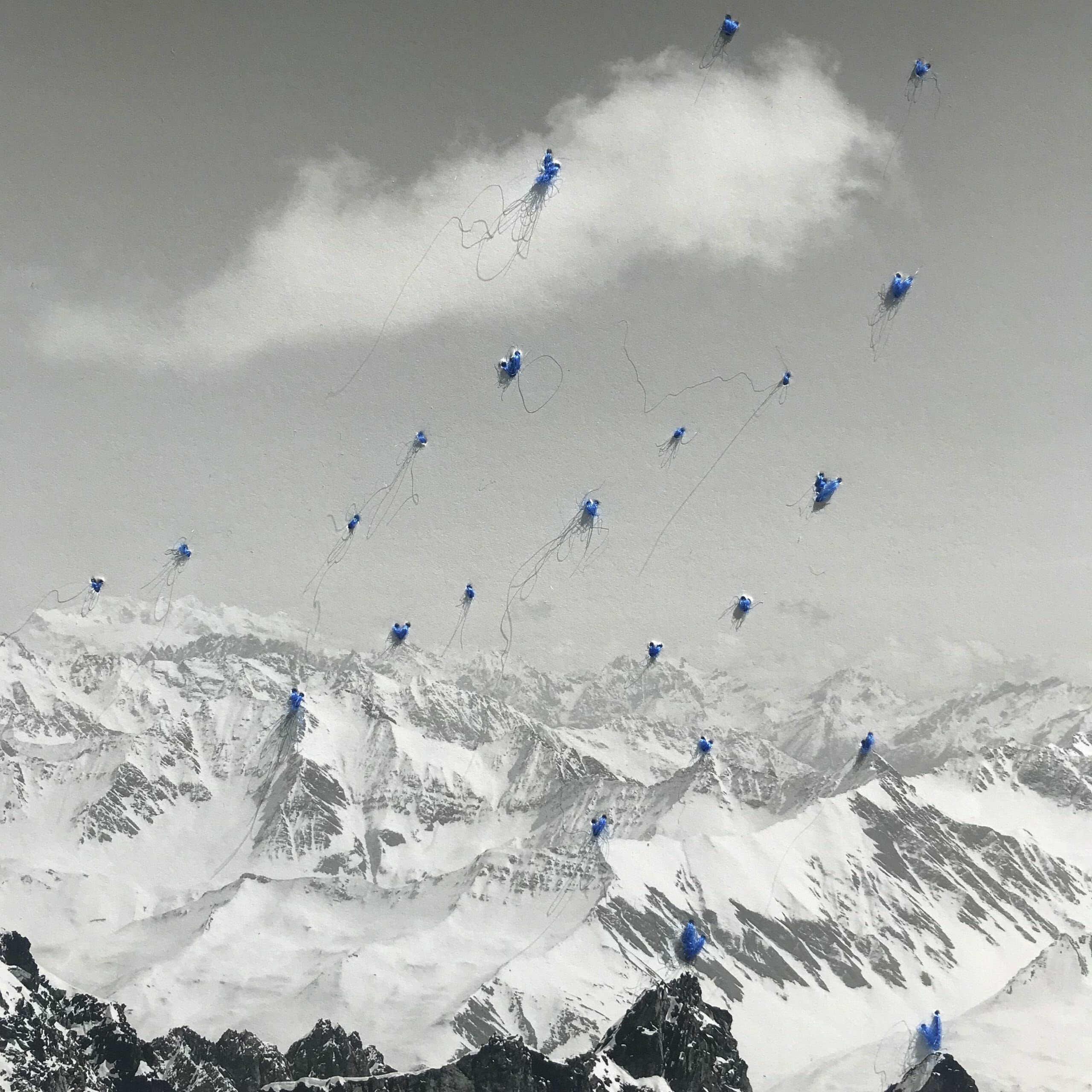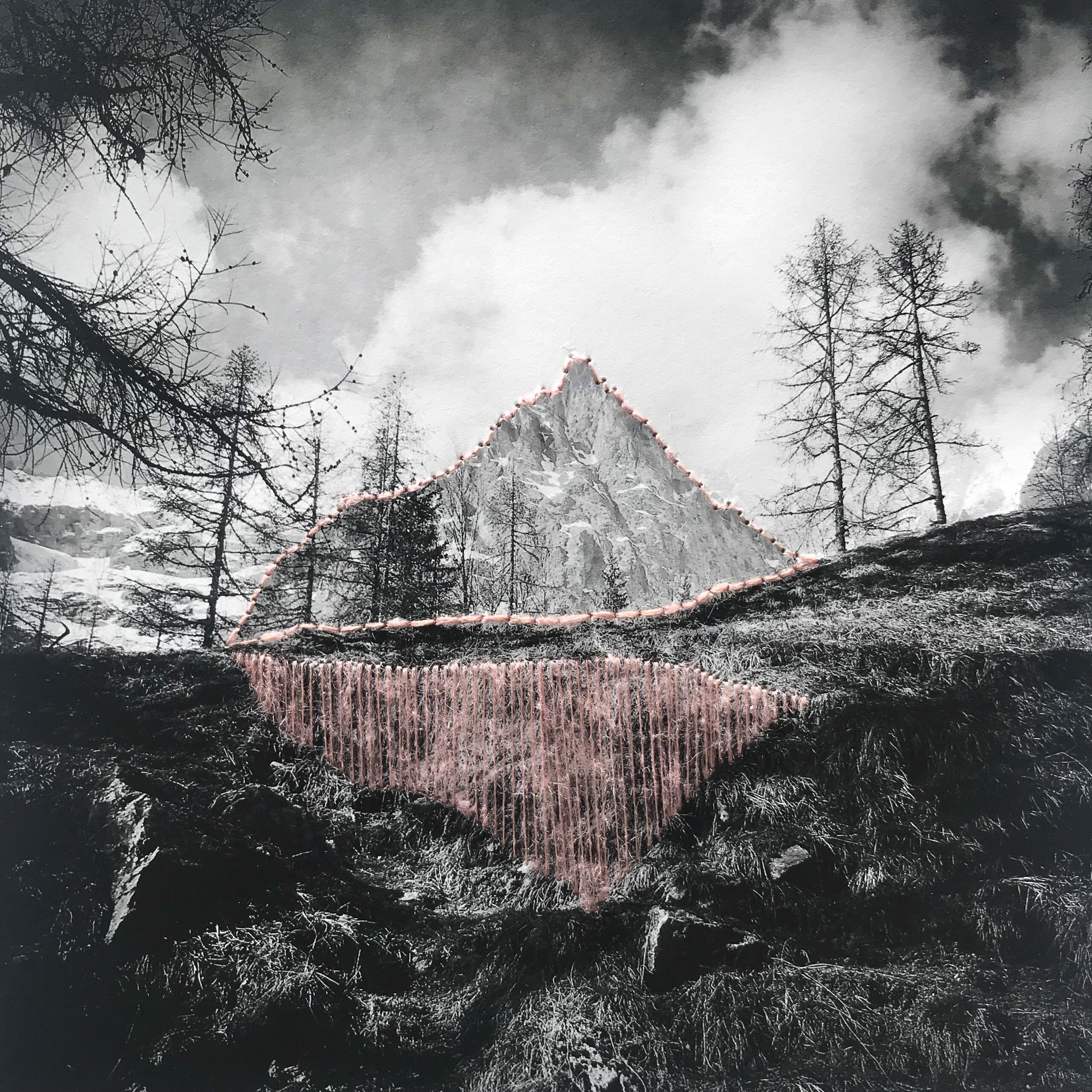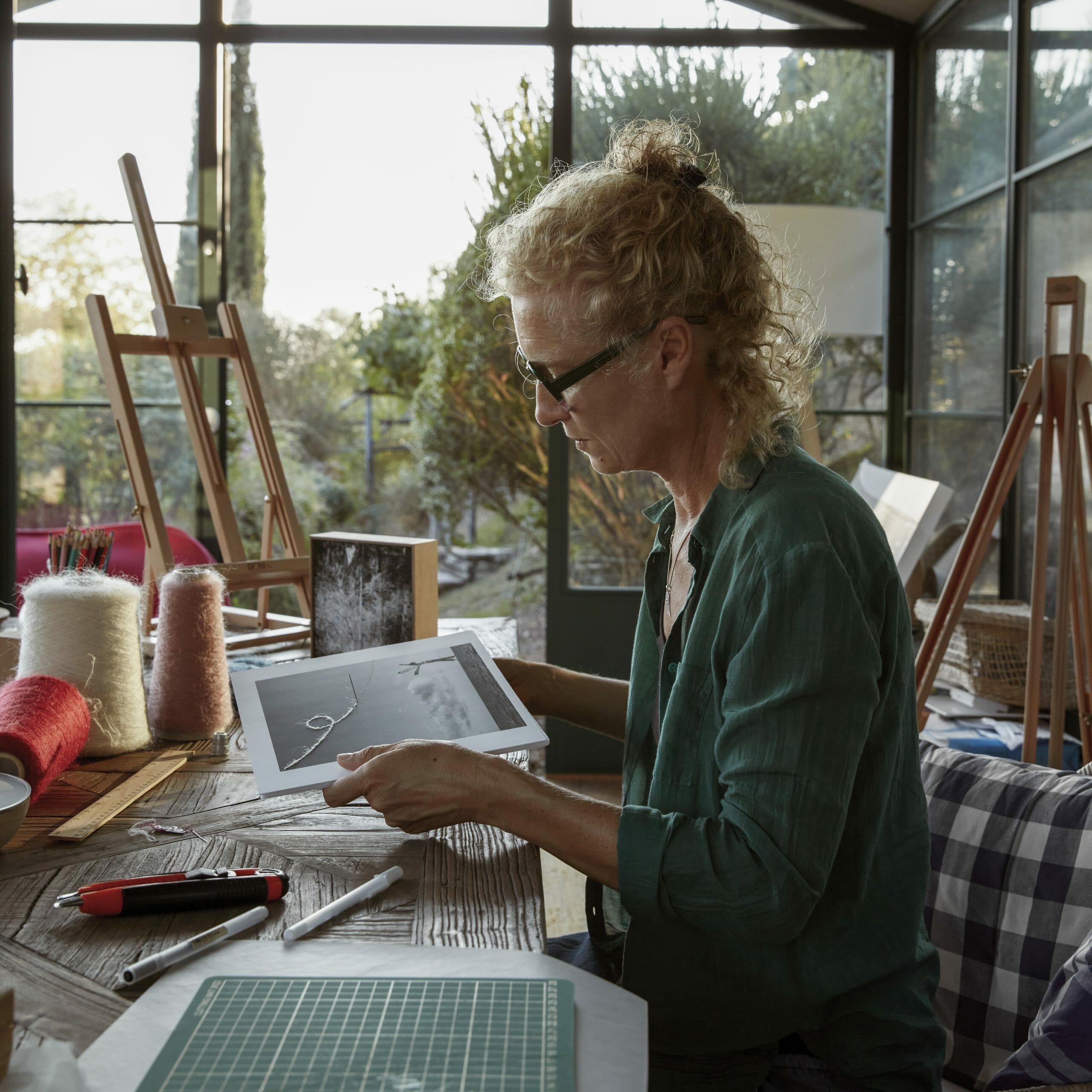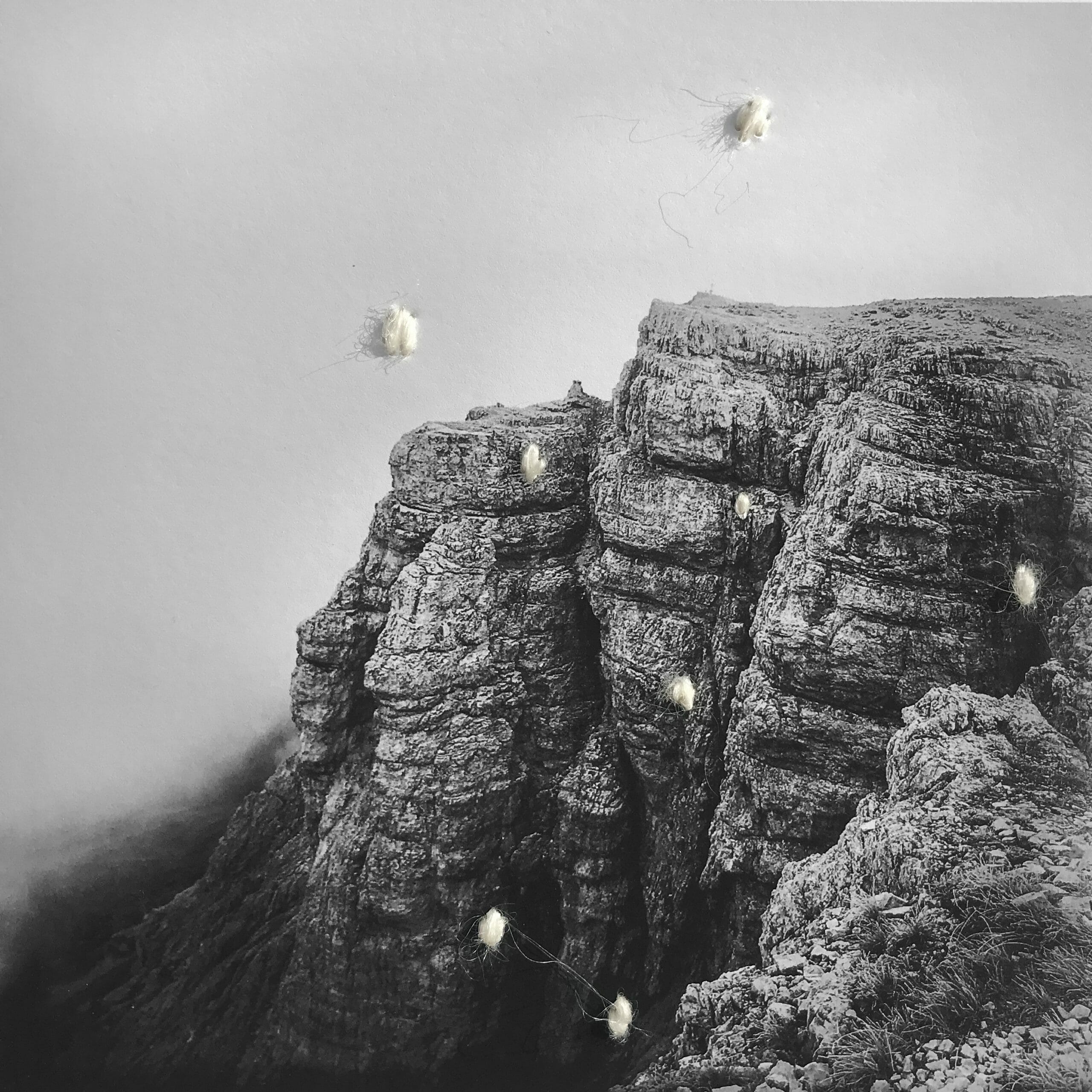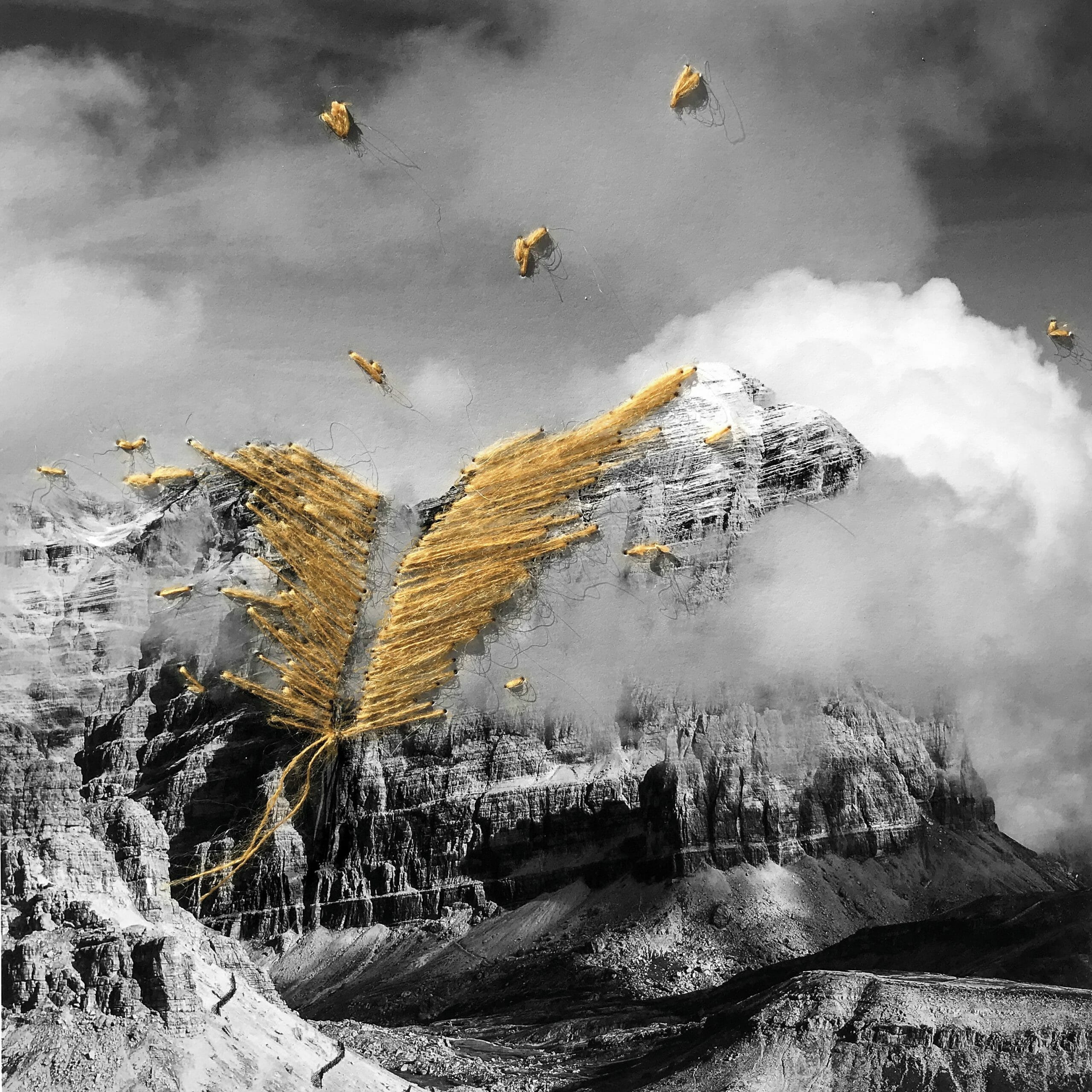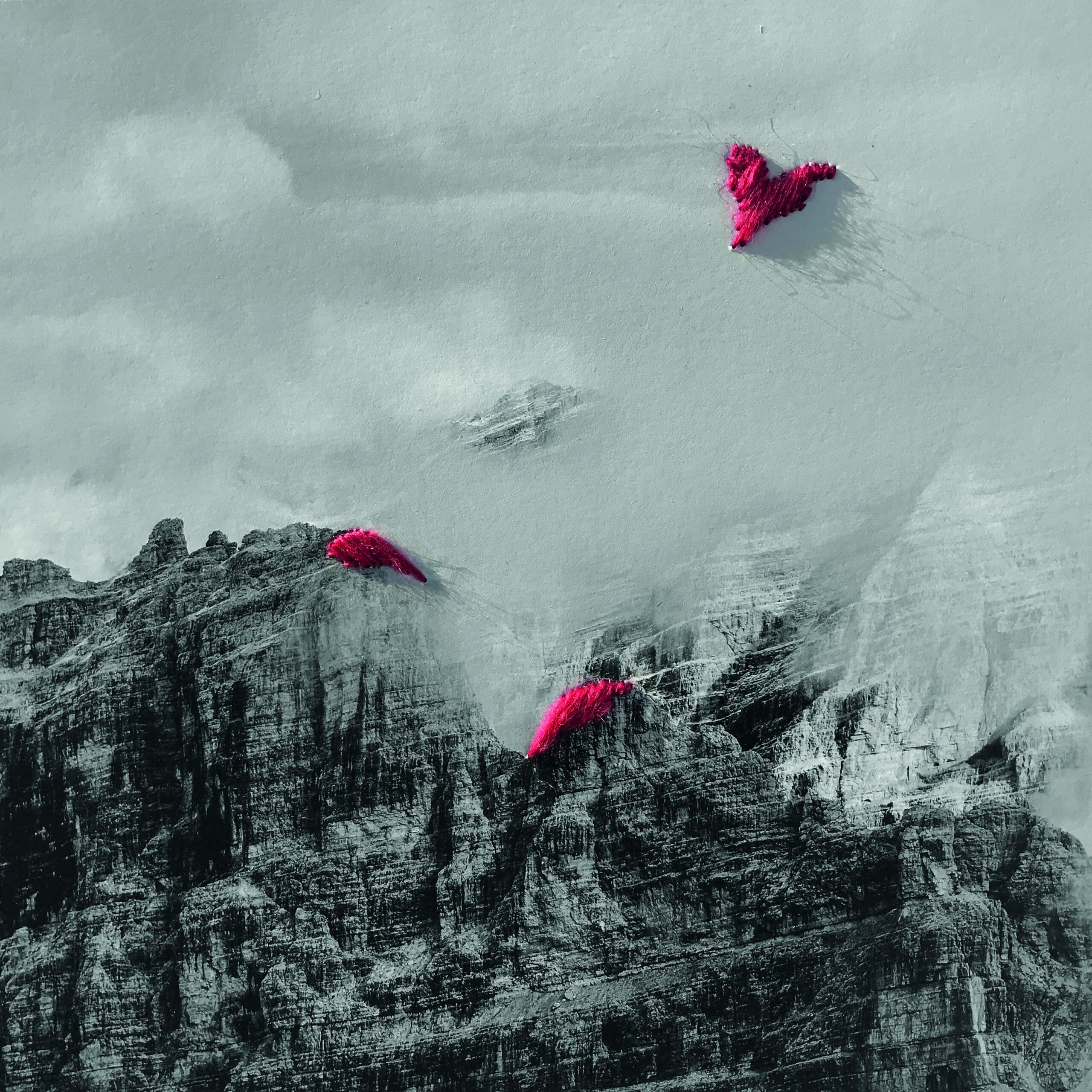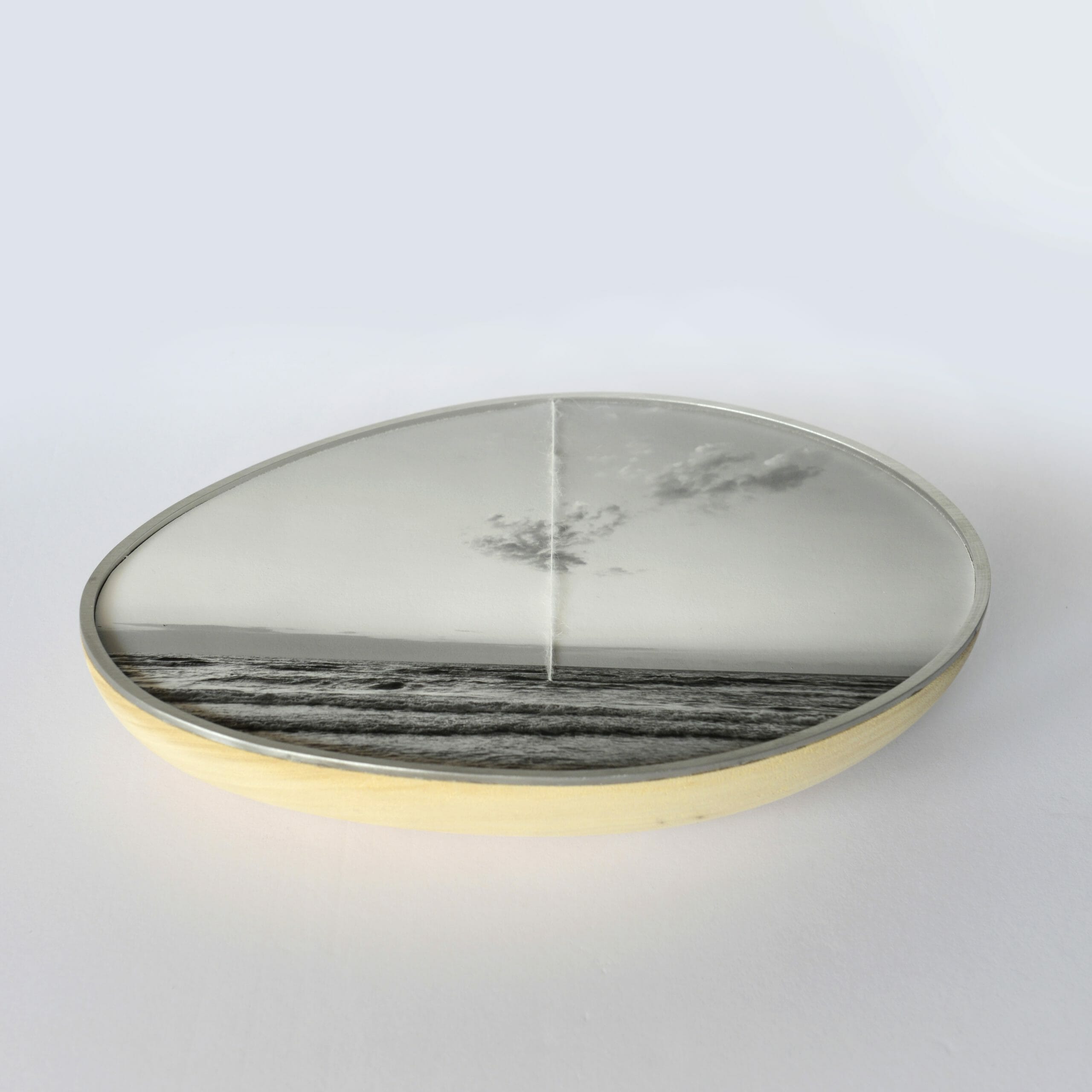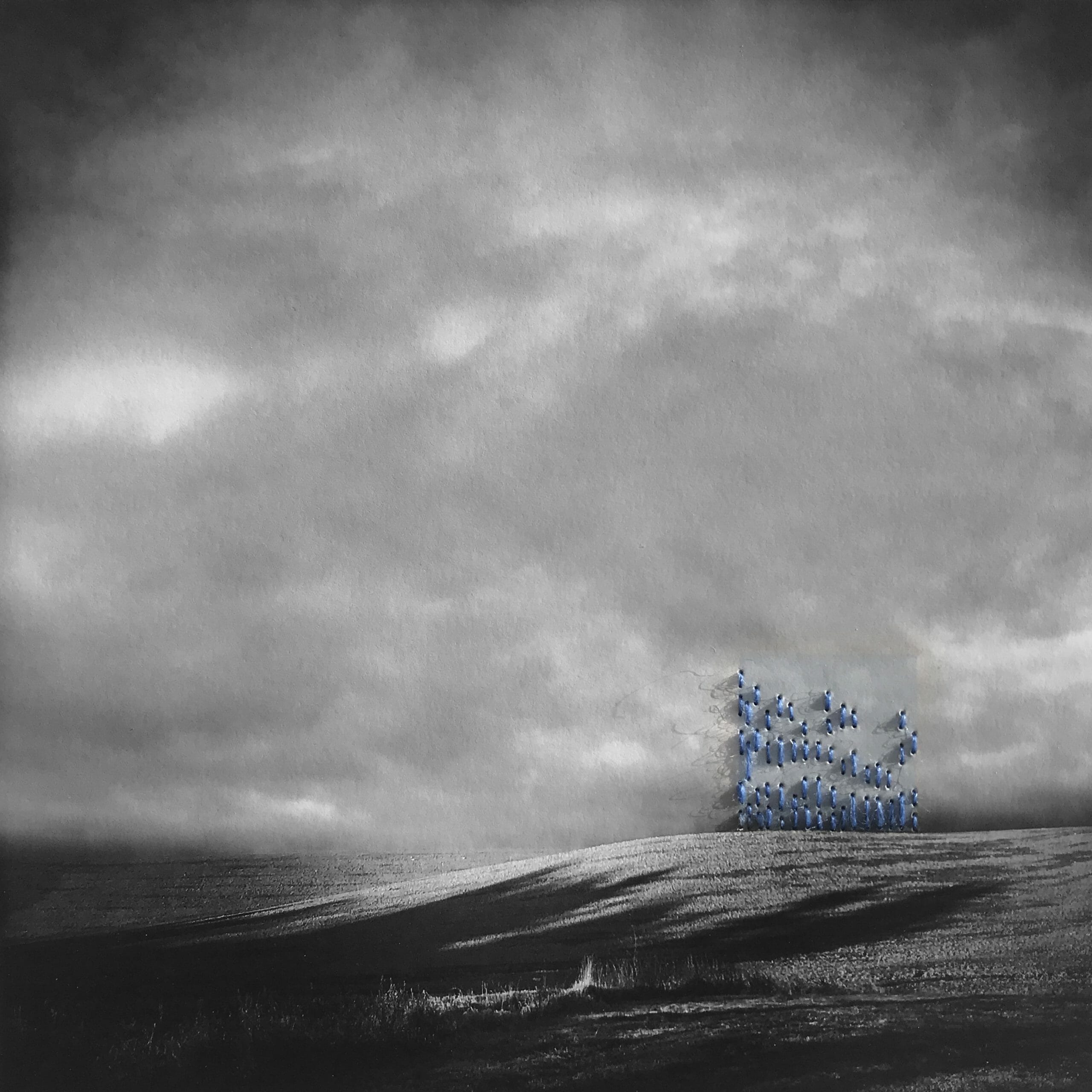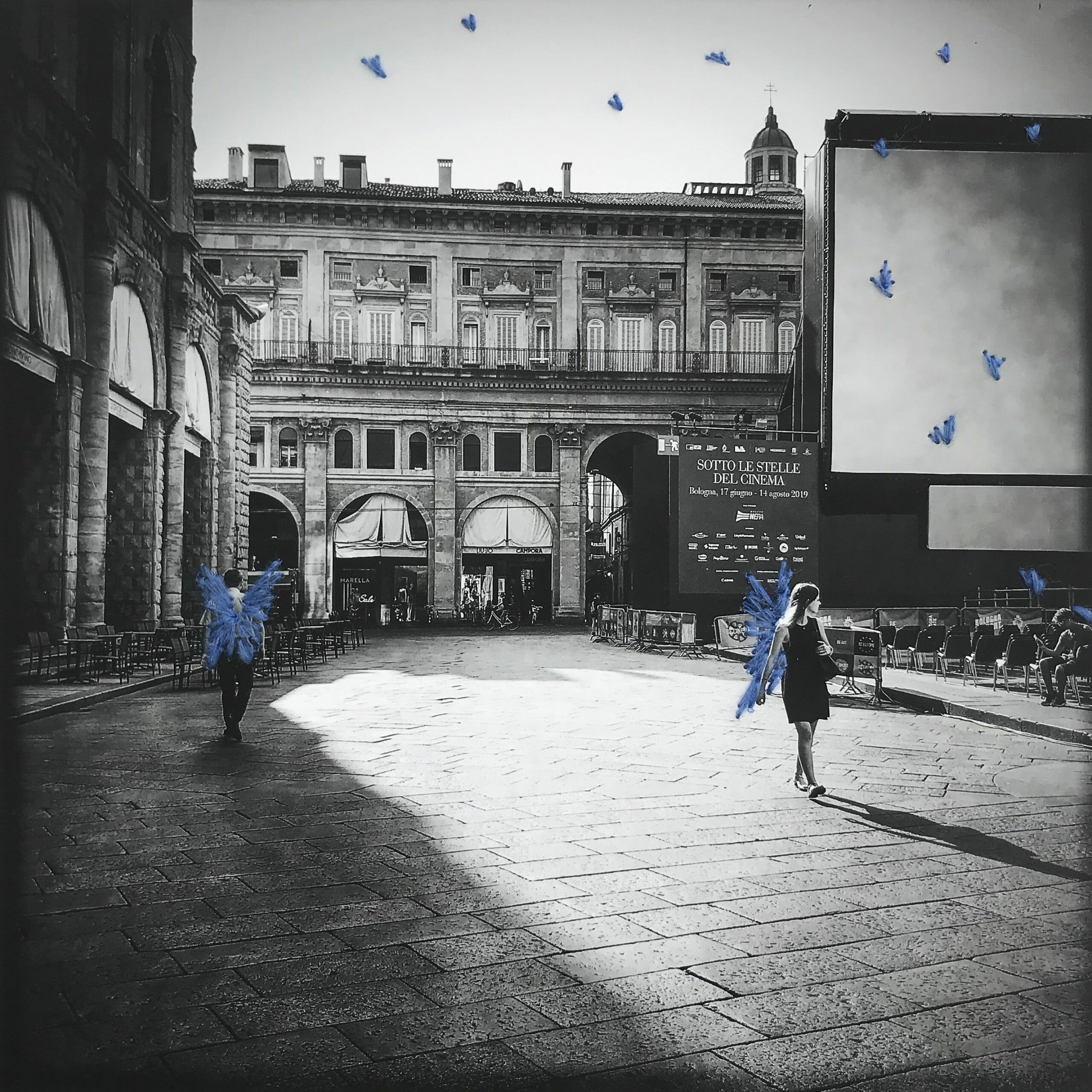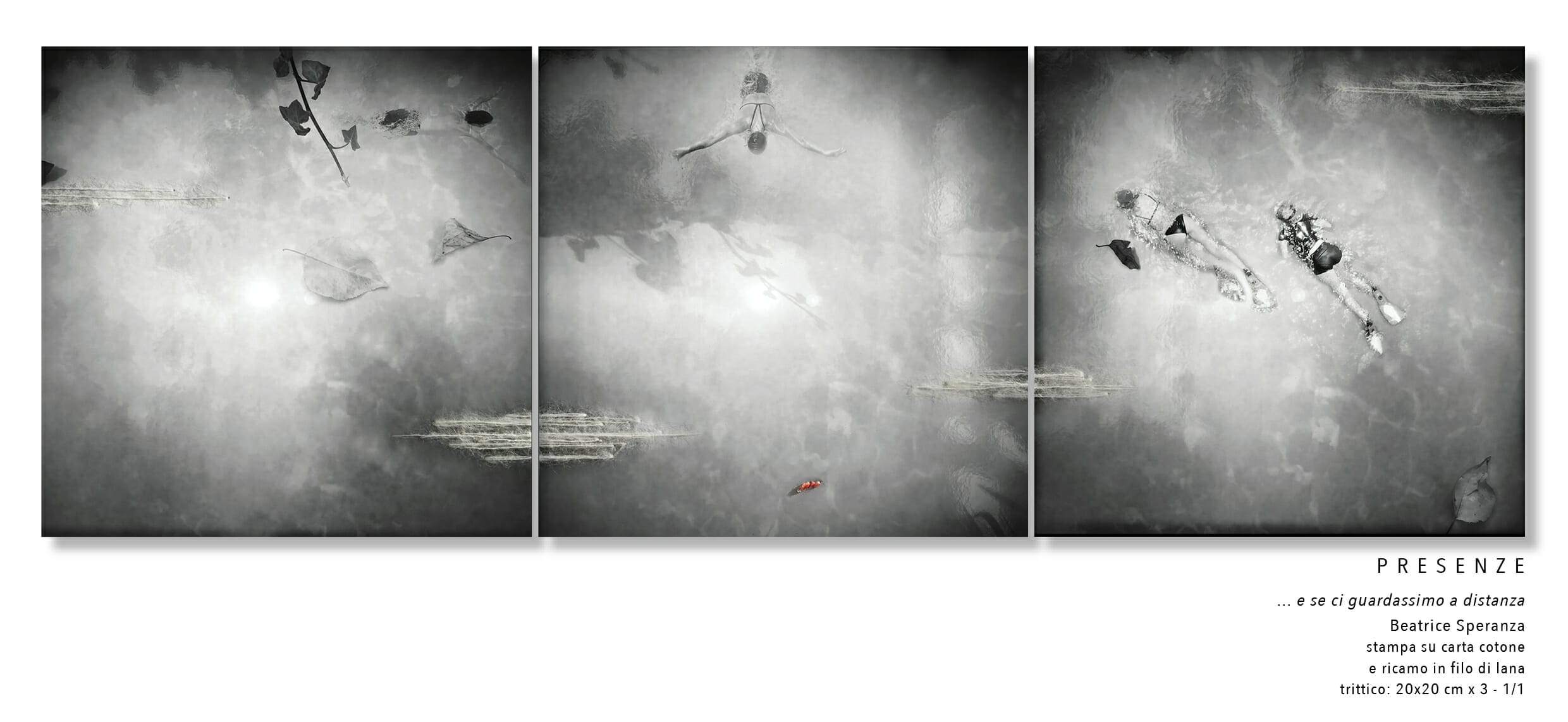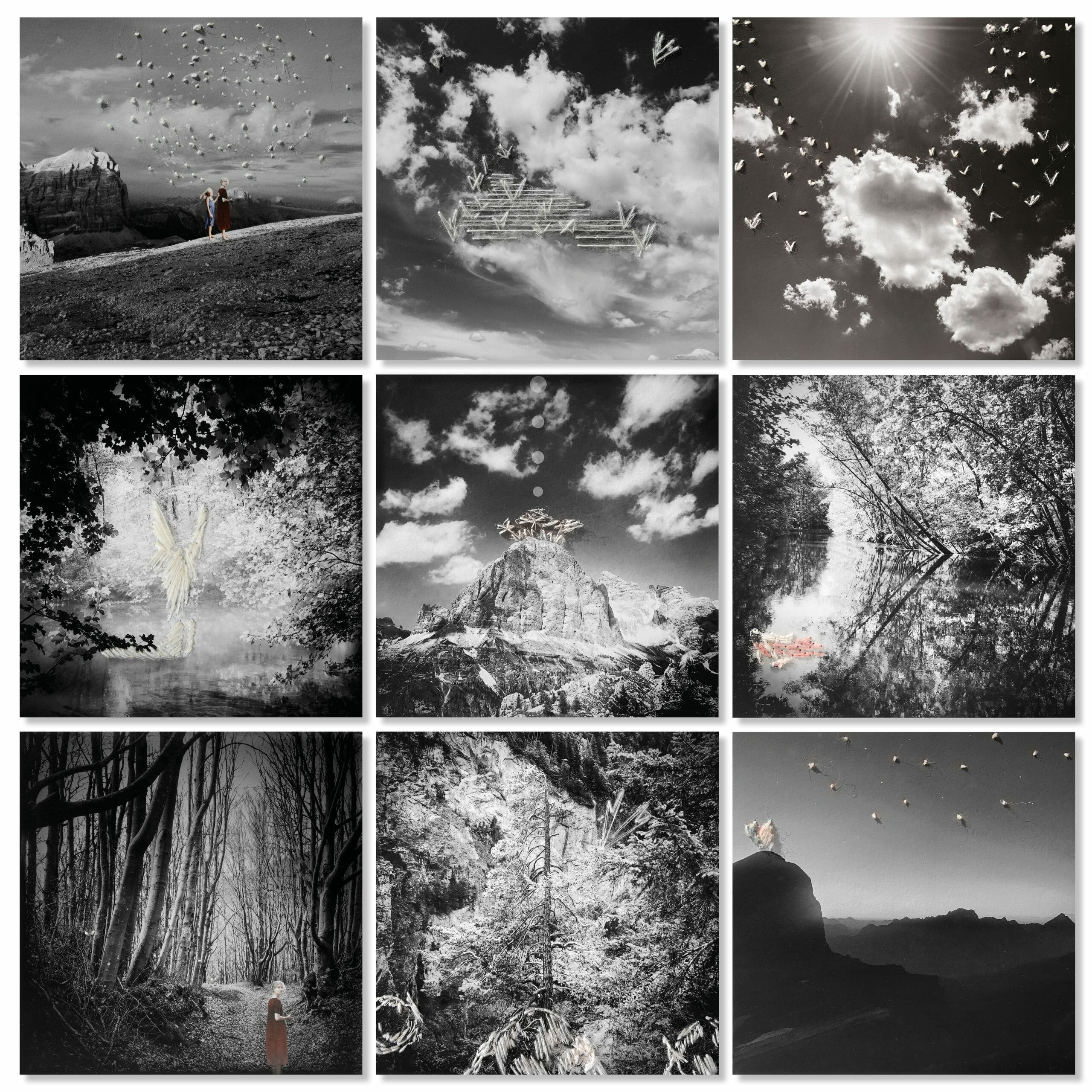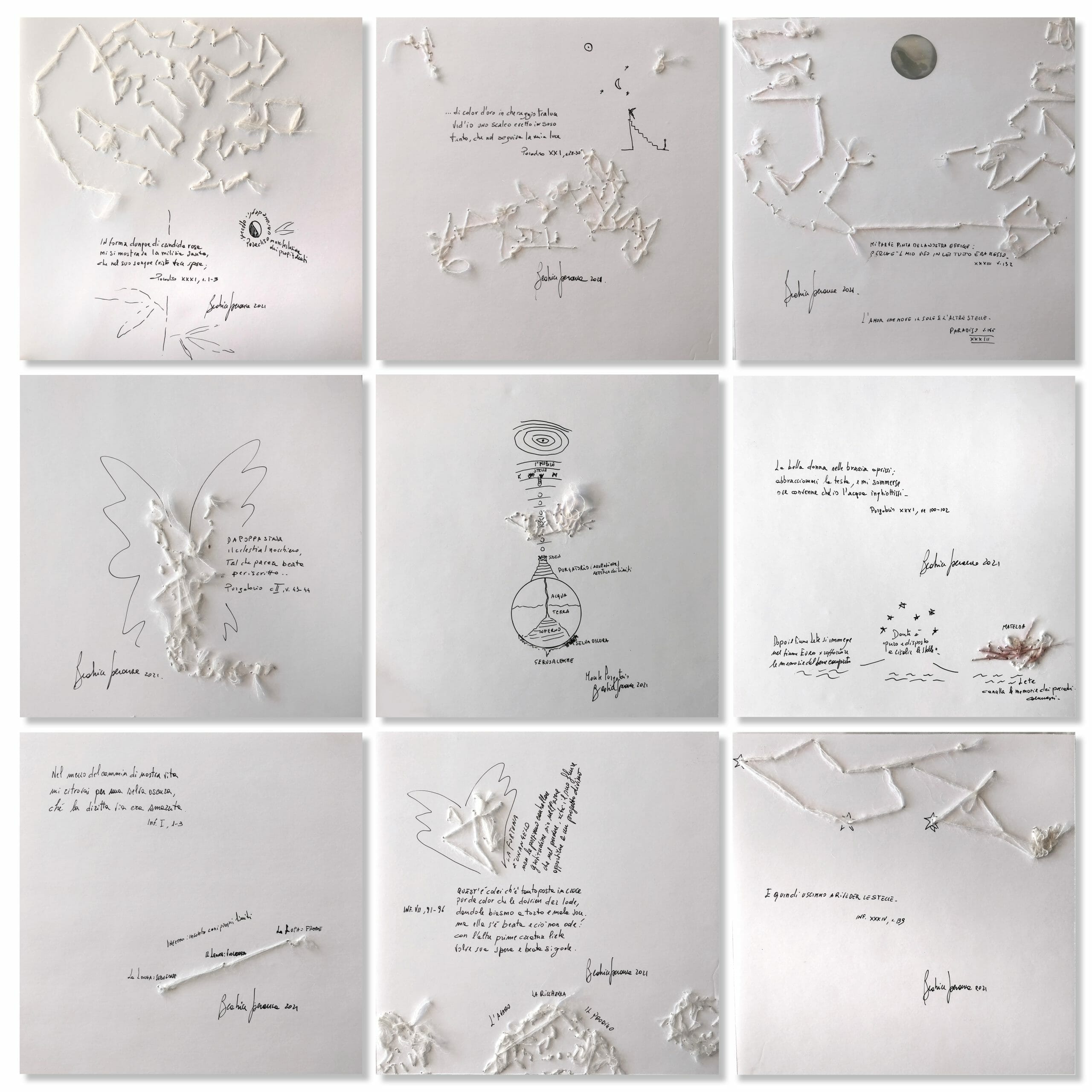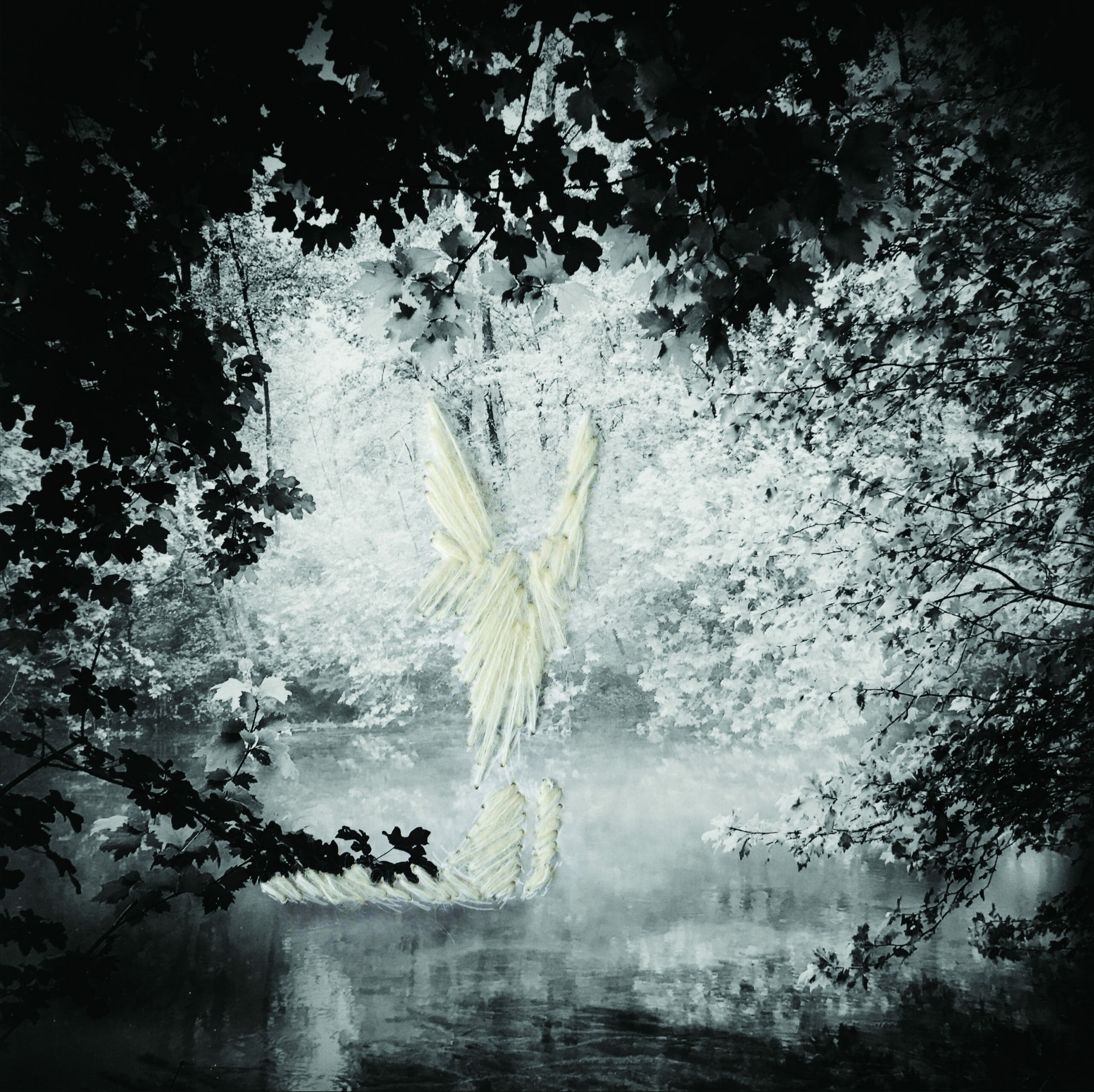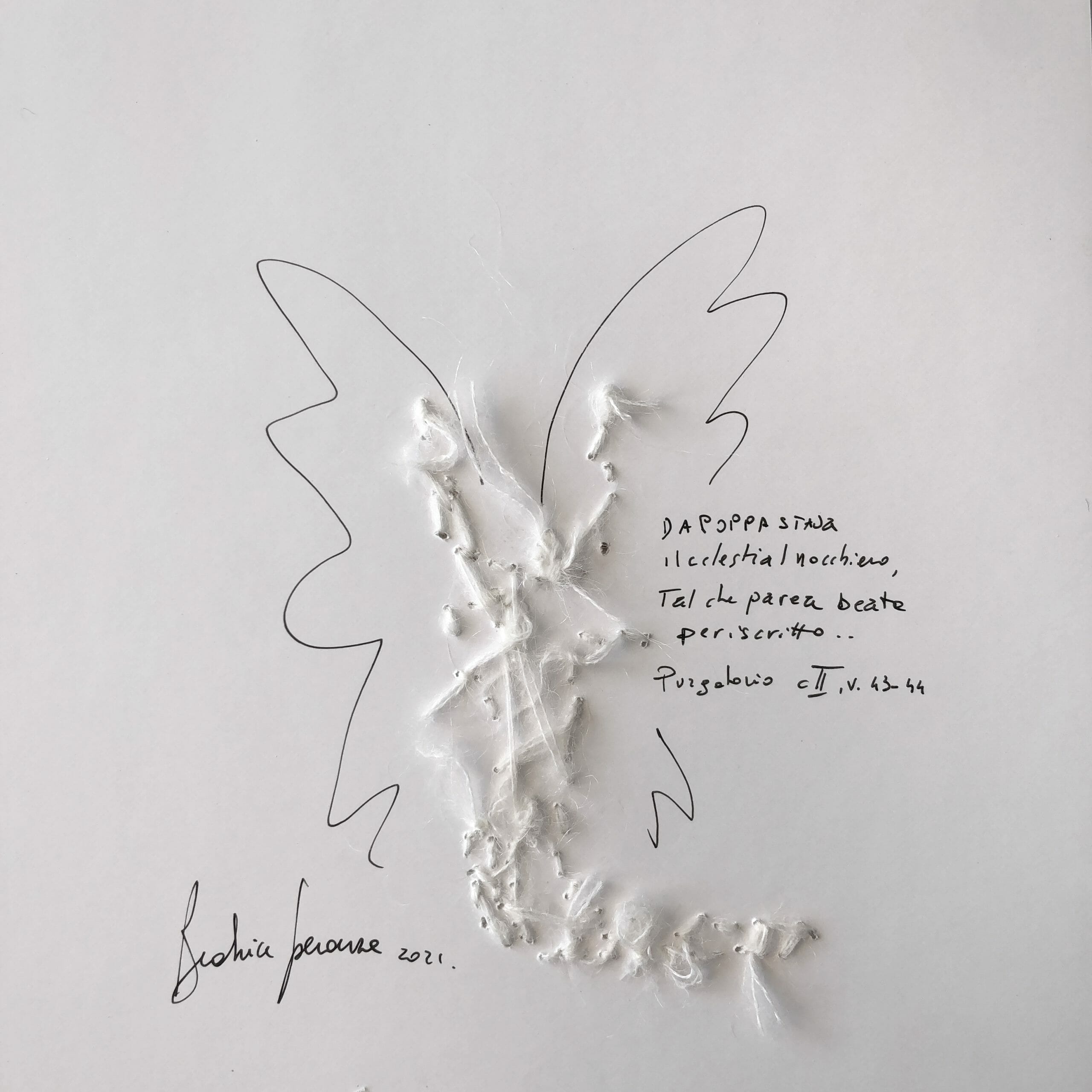BEATRICE SPERANZA
*Featured photo: From the project Le presenze e montagna, Legare la terra al cielo. Copyright Beatrice Speranza
Beatrice Speranza (Lucca, 1970) graduated in Architecture but her passion for image and composition soon led her to undertake a professional and artistic career in the photographic field, ranging from portrait to landscape to reportage. Experimentation and research, also through collaborations in different fields, lead her to create hybrid projects, including, in recent years, the series of works in which she combines photography, embroidery and other disciplines, not least literature. She has exhibited in national and international venues. And here’s what she told us about her …
A few years ago, Vinton Cerf, vice president of Google, recommended printing the photos we really care about to protect them from being unable to view the digital format that is now obsolete in the future. Your photographs are not only printed but also made unrepeatable by the embroidery.This double passage recovers two elements that appear so anachronistic as to be extremely contemporary: touch – or the possibility of establishing physical contact starting from the artist’s relationship with his work – and time – the time of choosing the shot, of printing and last but not least the slow time of embroidery. Your research and your artistic practice escape virtualization, digitization and speed. What was the path that led you up to here?
You have identified the two characteristics that prompted me to physically intervene on my photos: touch and time.
I have always had a passion for photography and my opportunity to deepen it was the first year of university and the subsequent studies that I chose as a subject for the final exam in Architecture. I was an introverted and shy girl and with photography I started not only to investigate myself but also to open up to others, to overcome fears and limits.
For me, physical contact with my photos was fundamental, the long nights in my small dark room. It was a slow time of great presence … if I felt distracted or with my head elsewhere I would postpone my press sessions.
I have always found it easy to travel with my mind, to pursue visions and ideas that I then tried to realize, but there was a moment when this difficulty in concentrating had become almost embarrassing … a word was enough to connect me to something else to get lost in my thoughts and mental plans … and so I was missing the present moment. In 2012 I was invited to create an exhibition together with the floral designer Emy Petrini: I looked at her weaves and the calm and serenity she had while she made them and it was after a little discussion after my umpteenth flight of imagination during one of our conversations. , that I told myself that it would be important to work with my hands again, to regain the concentration I had in the dark room. I remember the moment very well: I was sitting on my sofa in the living room and I had the vision of the embroideries. I visualized those slow gestures that I have seen my grandmother make many times and the images of classic paintings with the ladies embroidering in the light of a window. A meditative act. This is how my Presences were born: a search for attention, in an act so delicate and strong at the same time, in piercing the paper with a needle with the risk of tearing it and above all a gesture that does not allow you to go back. It was 2013, Emy and I presented “Secret Plots” at Galleria 33 by Tiziana Tommei. A project born as an exercise of presence rather than aesthetic research, but which was immediately noticed by the then director of the Christie’s auction house, Clarice Pecori Giraldi, who unknowingly gave me the courage to pursue this path.
In your works natural landscapes and architecture verge through other disciplines – from literature to meditation, in a synthesis in which each element finds its balance. What is the genesis of your works? How are they born and through which steps do they take shape?
In 2010 I took my first course in breathing and meditation techniques, a very gentle path and at the same time an arduous path towards self-awareness, where for the first time I heard about presence.
My works were initially solos, the last works are real narratives. The embroidery does not trace something already present in the image, but reveals hidden presences that change the balance of the photo to find a new one. I have always used my Presences as a notebook: the paths I take, my readings are stopped as almost post-it through the embroideries and titles that match my works… In 2015 for the exhibition The time suspended I made the first visual stories using beeswax (The fullness of the void) and paraffin (The nostalgia for the sky) both dedicated to my mother, but it was in 2016 after reading the last book by Pia Pera, I haven’t told the garden yet, that I decided to create the first composition of embroidered photos of Pia’s garden which I called, in agreement with her, Free Presences.
Over the years I have been asked to interpret in my dreamlike way both companies such as Faema, famous for its coffee machines, and Itema, a leader in haute couture looms, as well as places such as the Mont Blanc massif, the Dolomites and also a city, Bologna. I always try to get an idea first of the history of the place and the possible project, but then reality, the unexpected and the same emotions of the moment lead my gaze and the image to be embroidered also arrives later in the selection of photos.
The embroidery intervention allows to give the work a hybrid three-dimensionality, since it does not support the image but rather alters its perception and multiplies its shadows. Does this ‘foreign element’ take on a further meaning within the work – conceptual, philosophical, functional?
My interventions are always light, even the small size of the work leads the observer to an approached relationship and it is there that the embroidery reveals itself and it is to it that I entrust the task of changing point of view and giving a new meaning to the image.
With photography I get involved, to discover myself, to take notes and focus on what I consider a value. The thread connects two points, creates textures and there are many meanings that it can take on … it is always exciting for me to discover how they resonate in the observer. I believe so much in the importance of uniting the earth to the sky, in the search for elevation and in the importance of being well rooted in the earth … these are experiences that I have personally experienced and that I carry over in my Presences. Just like the shadows that are created through the embroidery, the shadow comes from the light and at the same time enhances it. Shadows always change over the course of a day and depending on the source of light that arrives on my photos, they make them three-dimensional and in a certain sense live in that vibrating mohair thread that I usually use.The last work I called it Luce and for the first time I gave an important role to gold leaf: a triptych that presents three golden globes facing the Americas, Europe and Asia immersed in the same sea and under the same sky. The thread had the task of writing the word LUX this time.
What is silence, this presence that permeates all your works?
Silence comes to me when I calm my mind, listen and let my heart speak. When I am seized by that moment of wonder that makes me hold my breath and remain amazed: it is a split second where everything is silent and then a great sense of gratitude takes place.It comes as an explosion of joy that immediately binds me to everyone and everything … once I picked up the phone and immediately felt the desire to share it with my mother, then with my dearest loved ones … now I’m learning to keep it and this perhaps allowed me to express it through my works.
You choose colored woolen threads to intervene on black and white photographs. Why this choice?
But that’s not always the case. The colors I use most are white, pale blue and antique pink. They are very light, intimate but sometimes I feel the need for more energy, strength, to emphasize the embroidery, but always in balance with the image.My works are all unique pieces, even if I wanted it would be difficult to repeat the same one, but even the color when I use it is because I feel that that photo needs that shade, at least in that moment … then everything changes and it could be that after some time, new shades could dialogue with the same image.
My first embroidered photos were also in color, and I must say they were very beautiful, then again because of the need for intimacy black and white came to be, but the evolutions and changes are always taking place.
Recent works include the series of works inspired by Dante’s Divine Comedy. Can you tell me about this project?
Last year I was invited to create three works for the traveling exhibition CANTICHE, a collective exhibition for which Nino Miglior, Giovanni Gosdan, Marco Baldassari and Gianni Schicchi were asked to invite four other photographers each.
It was an opportunity to get closer to Dante and to reflect on the journey of our life. My desire from the beginning was not to resume the study of the comedia in a historical and literal key, but to go and discover the hidden message, as Dante himself declares in canto IX of Inferno: “O you who have intellects healthy, look at the doctrine that hides under the veil of the strange verses. “
And this is how I came across the studies of Giorgia Sitta, a clinical psychologist, a scholar of alchemy and esoteric psychology. I have had days of great excitement, but also many upsets and stumbles.
The journey stimulated me to go on with the creation of three Presences for cantica which I presented for the first time at last year’s Mia with the Still Gallery.
For this project it was also important to study the images of Gustave Doré, to search in the memory of my photos for the places that lent themselves to accommodate my embroideries, to represent the scenes narrated by Dante in the various Cantiche.
I immediately decided to play with the number 3 for the images of each canticle and to finish them with the sky. Since the Divine Comedy is not only Dante’s initiatory journey but also the journey of every human being who sets out in search of himself … all of a sudden I had a vision of myself inside the dark forest.
While my mind was trying to counter this vision, why have I ever portrayed myself in one of my photos, I asked myself: but if Beatrice is in the dark forest, who does she meet when she arrives in Heaven?. Here too the image became clear: a photo of me at nine accompanying Beatrice of more mature age (even if the photo shows me at just 21). So I found the courage and made the first triptych.
